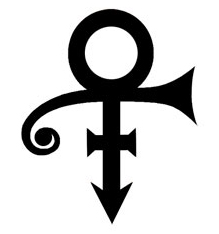I came across a news article discussing the recently issued design patent for an improved beverage and food cooler to Mike Golic (former NFL football player and current co-host of ESPN radio's Mike and Mike show), son Jake, and three other co-inventors. This got me to thinking about celebrity inventors and inventions (a distinction that will become more clear shortly), as well as the difference between utility (for mechanical arrangement and/or function) and design (aesthetic / ornamental design) patents.
If it is not obvious, a celebrity inventor is someone that is already a celebrity and later develops an invention that is exploited in some way. Although Thomas Jefferson was initially philosophically opposed to patents (and the limited monopoly provided), through his ministerial role as chief patent examiner as Secretary of State in the early years of the US republic, Jefferson came to appreciate the economic benefits derived from a patent system. And despite is prolific mechanical acumen, Jefferson did not attempt to patent the many inventions he developed after the US patent system was implemented in 1791 (and, of course, many of his inventions pre-dated the system), thus falling outside a reasonable definition of celebrity inventor.
Before his election as the 16th President of the United States (but as a member of Congress), Abraham Lincoln received a patent for buoying water vessel over shoals. Given the time (and times) of Lincoln's invention and congressional experience, any celebrity that Lincoln enjoyed at that point was limited.
Likewise, although Thomas Edison is extremely famous, his fame is tied to his inventions and his patents, and thus not quite within the celebrity inventor umbrella.
Shortly after she launched her American-film acting debut, in an effort to contribute to the allied war-effort during World War II, actress Hedy Lamarr teamed with George Antheil to develop a frequency-hopping signal system to prevent naval opposition from jamming naval torpedo signals that would cause the torpedo to veer off course and miss its target. Lamarr (under her married name Markey) and Antheil were awarded U.S. Patent No. 2,292,387 in 1942. However, a skeptical U.S. Navy did not adopt the technology. Instead, the technology sat unused until the 1960s, when it was finally adopted. Although Lemarr skirts the edge, since her technology was not adopted until after the patent term expired, this too falls short.
The several (and best) examples of celebrity inventors generally come from the performing arts, where some necessity was the inspiration for an invention for integrated use in the performer's milieu. As such, Harry Houdini is probably the first celebrity inventor, creating a diving suit awarded a patent in 1921, some thirty-years into his illusionist career. Walt Disney held two patents for animation and motion picture techniques, with the animation patent forming part of the launching pad for Disney Studios.
Although Houdini and Disney had utility patents, design patents are well represented by George Lucas and his LucasFilm empire. Being the pioneer in film-to-toy merchandising, Lucas (and with the artistic input of legendary artist Ralph McQuarry) holds at least 11 issued design patents for various conceptions of characters from the Star Wars universe, such as the uber-popular Boba Fett, Yoda, and the AT-AT imperial transport.
The world of music provides some of the more recognizable implementations of invention-by-inventor. Eddie Van Halen created a removable try that attaches to the underside of a guitar for assisting the guitarist in accessing the guitar like a piano (now expired). EVH also invented and owns the patents for a single-string de-tuning system (branded as the D-Tuna) and the design for a guitar headstock (with a scallop cut removed). EVH also has purchased other patents (here and here).
Musical genius Prince held a design patent for a portable keyboard (expired in 2008). Prince's chief musical rival in the 80s, Michael Jackson, invented a shoe-device that created the illusion of anti-gravity, most effectively used in his video for the hit-song "Smooth Criminal".
The previous examples stand in contrast to "celebrity inventions" that are really no more than celebrity-endorsed products invented by other non-celebrities. The "George Foreman Grill" is one of the best examples of this, since the grill was actually invented by Michael Boehm. With the success of the Foreman Grill, the copycats followed, with the Evander Holyfield Real Deal Grill, the Carl Lewis Health Grill, and the Hulk Hogan Blender. However, these are good examples of the licensing, use, and (somewhat) successful utilization of the valuable name, image, and likeness (aka, NIL) of a well-known celebrity.
Whether the Golics can land a licensing deal or sell to a cooler manufacturer, and achieve the desired monetary success with the ornamental design of this new cooler remains to be seen. Mike Golic's celebrity certainly will be a large selling point in getting the product recognized, often one of the hardest parts of achieving commercial success.
While you may not (yet) be famous, if you have an invention that you believe functions or appears differently from what is out there, contact York Law LLC to get more information on what you can do to start down the path of success. (E: oly3@olenyork.com).
 One of the first uses of this icon was in the body shape of a Prince guitar. Later, this symbol was the subject of several trademark applications that matured into federally registered trademarks for a variety of goods and services. Those four registered marks continue in use.
One of the first uses of this icon was in the body shape of a Prince guitar. Later, this symbol was the subject of several trademark applications that matured into federally registered trademarks for a variety of goods and services. Those four registered marks continue in use.